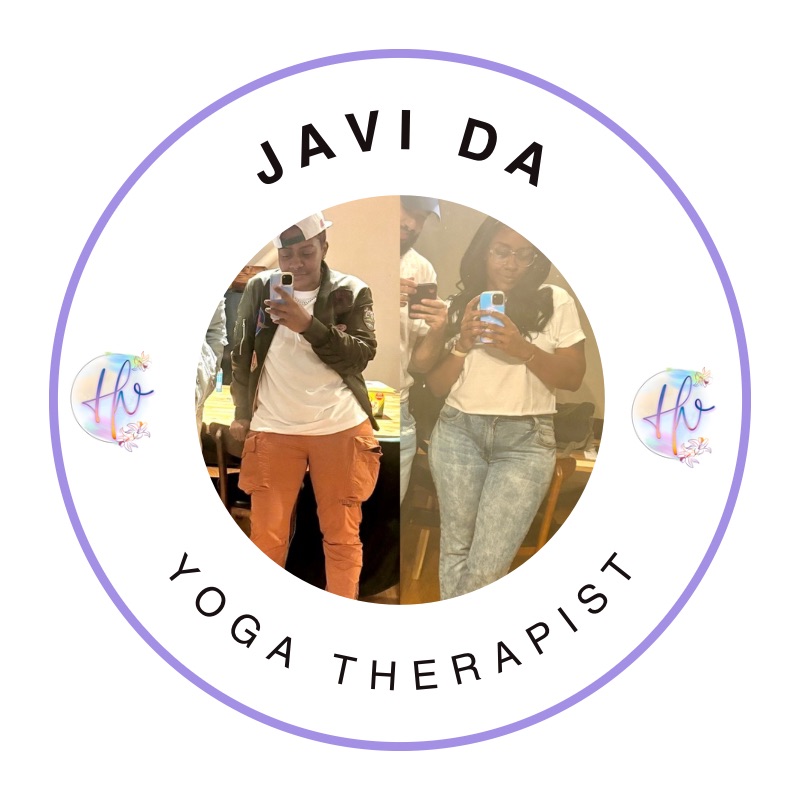Unlocking Inner Peace: How Yoga Can Heal Your Emotions
- Javi Da Yoga Therapist

- Oct 14
- 3 min read
In today's fast-paced world, emotional turmoil affects many of us. Stress from work, personal relationships, and daily life challenges can weigh us down. Finding a way to heal emotionally is essential. This is where yoga comes into play. Beyond the physical practice, yoga offers a holistic approach to well-being that connects the mind, body, and spirit.
In this blog post, we will explore how yoga can serve as a powerful tool for emotional healing and help you discover inner peace.
Understanding Emotional Healing
Emotional healing is about addressing and overcoming emotional pain, trauma, or distress. It requires acknowledging feelings, understanding their origins, and finding effective coping strategies. Research shows that approximately 1 in 5 adults experience mental illness in a given year, with common issues like anxiety and depression often stemming from unresolved emotional wounds.
Yoga promotes emotional healing by enhancing mindfulness, self-awareness, and overall physical health. Through postures, breathing techniques, and meditation, yoga encourages individuals to connect with their emotions and release negativity.
The Connection Between Yoga and Emotions
The belief that the mind and body are interconnected is fundamental to yoga. When we face emotional distress, it often leads to physical tension. For instance, many people hold stress in their shoulders, leading to discomfort. On the flip side, practicing yoga can alleviate this emotional pain by releasing accumulated energy and promoting relaxation.
Studies indicate that regular yoga practice can lower cortisol levels by up to 50%, significantly easing tension and fostering a greater sense of well-being. This physiological shift can help individuals manage their emotions more effectively, resulting in increased peace and stability.
Mindfulness and Self-Awareness
Mindfulness is a core principle in yoga, focusing on being present without judgment. It allows individuals to observe thoughts and feelings without becoming overwhelmed.
Integrating mindfulness into your yoga practice can enhance emotional healing. By concentrating on your breath and body sensations during your practice, you create space to explore emotions safely. This self-awareness fosters a better understanding and acceptance of feelings, leading to healing.
Breathing Techniques for Emotional Release
Breath is an essential tool in yoga that can greatly impact emotional well-being. Specific breathing techniques, known as pranayama, calm the mind and help release emotional tension.
For example, diaphragmatic breathing—taking deep breaths that fill the belly—can activate the body's relaxation response, leading to a reduction in anxiety. Additionally, alternate nostril breathing is effective for balancing the nervous system and clearing emotional blockages.
Incorporating these techniques into your routine can enhance your ability to manage emotions, fostering a sense of inner peace.
Yoga Poses for Emotional Healing
Some yoga poses are particularly effective for emotional healing. Here are a few to consider incorporating into your practice:
1. Child's Pose (Balasana)
This gentle pose promotes relaxation and introspection. It encourages you to release tension and can be a powerful choice for emotional healing.
2. Heart-Opening Poses (e.g., Cobra Pose, Camel Pose)
Heart-opening poses aid in releasing pent-up emotions and fostering feelings of love and compassion. They encourage vulnerability and can be particularly helpful for those coping with grief or heartache.
3. Legs-Up-the-Wall Pose (Viparita Karani)
This restorative pose induces relaxation and alleviates anxiety. By encouraging blood flow, it creates a calming effect, making it a great addition to your emotional healing practice.
4. Seated Forward Bend (Paschimottanasana)
This pose invites introspection and can help release emotional tension stored in the body. It encourages surrender and facilitates emotional healing.
Creating a Safe Space for Healing
To reap the full benefits of yoga for emotional healing, creating a safe and supportive environment is crucial. You can achieve this by:
Setting Intentions: Before each practice, take a moment to set an intention for your healing journey. This focus can help channel your energy more effectively.
Choosing the Right Space: Find a quiet, comfortable place without distractions. This allows you to connect more deeply with your emotions.
Listening to Your Body: Stay attuned to your body during your practice. If a pose triggers discomfort or negative emotions, it's okay to modify or skip it.
The Role of Meditation in Emotional Healing
Meditation complements yoga beautifully and can enhance emotional healing. It allows for deeper introspection and helps individuals process emotions more effectively.
Adding a few minutes of meditation at the end of your yoga session can provide extra benefits, including improved focus, reduced anxiety, and enhanced emotional regulation. This dedicated time encourages reflection and helps you navigate your feelings.
Finding Balance Through Yoga
Yoga is a powerful tool for emotional healing, offering a well-rounded approach to well-being. By promoting mindfulness, self-awareness, and physical health, it helps individuals find inner peace and balance in their lives.
Whether struggling with stress, anxiety, or emotional pain, integrating yoga into your routine can provide essential support on your healing journey. Remember, healing is a process that takes time. With patience and practice, you can achieve emotional balance and a more peaceful life.





Comments